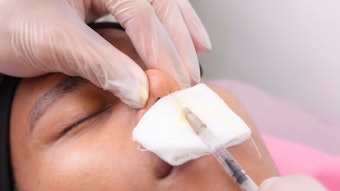
Hyaluronic acid (HA) filler injections are effective in improving periorbital deformities, but debate exists on whether using a cannula or needle syringe to perform the injections affects outcomes in terms of aesthetic improvement and safety. To help answer this question, researchers Andreas Nikolis, MD, MSc, FRCSC, et al, conducted a study to evaluate the safety and efficacy of needle versus cannula-assisted injection for periorbital derformities. They published their findings in the Aesthetic Surgery Journal (July 20, 2021).
Related: Improving Safety of Temporal Region Injections
The prospective, randomized-controlled (with crossover), evaluator blinded study included 42 subjects with a mean age of 44.82 ± 11.62 years. The subjects underwent two treatment sessions, spaced two weeks apart, and they attended one follow-up visit four weeks after the last treatment. Randomized in a 3:3:1 ratio, 18 subjects received injections by needle, 18 received injections by cannula and six acted as their own control at baseline.
Subject satisfaction was evaluated at two and four weeks post treatment; information on adverse effects was also collected at this time. A blinded reviewer assessed before and after photos using standardized efficacy scales.
Related: HA Fillers Show Variations in Inflammatory Response and Integration
The study found no association between treatment group and efficacy, safety or subject satisfaction. The adverse effects that were reported in subject diaries were mild-to-moderate in nature and expected.
Related: [Technique] Botulinum Toxin Injections for Masseter Reduction
The authors concluded that when treating infraorbital deformities, HA injections performed with either a cannula or needle result in similar high efficacy and safety ratios.











